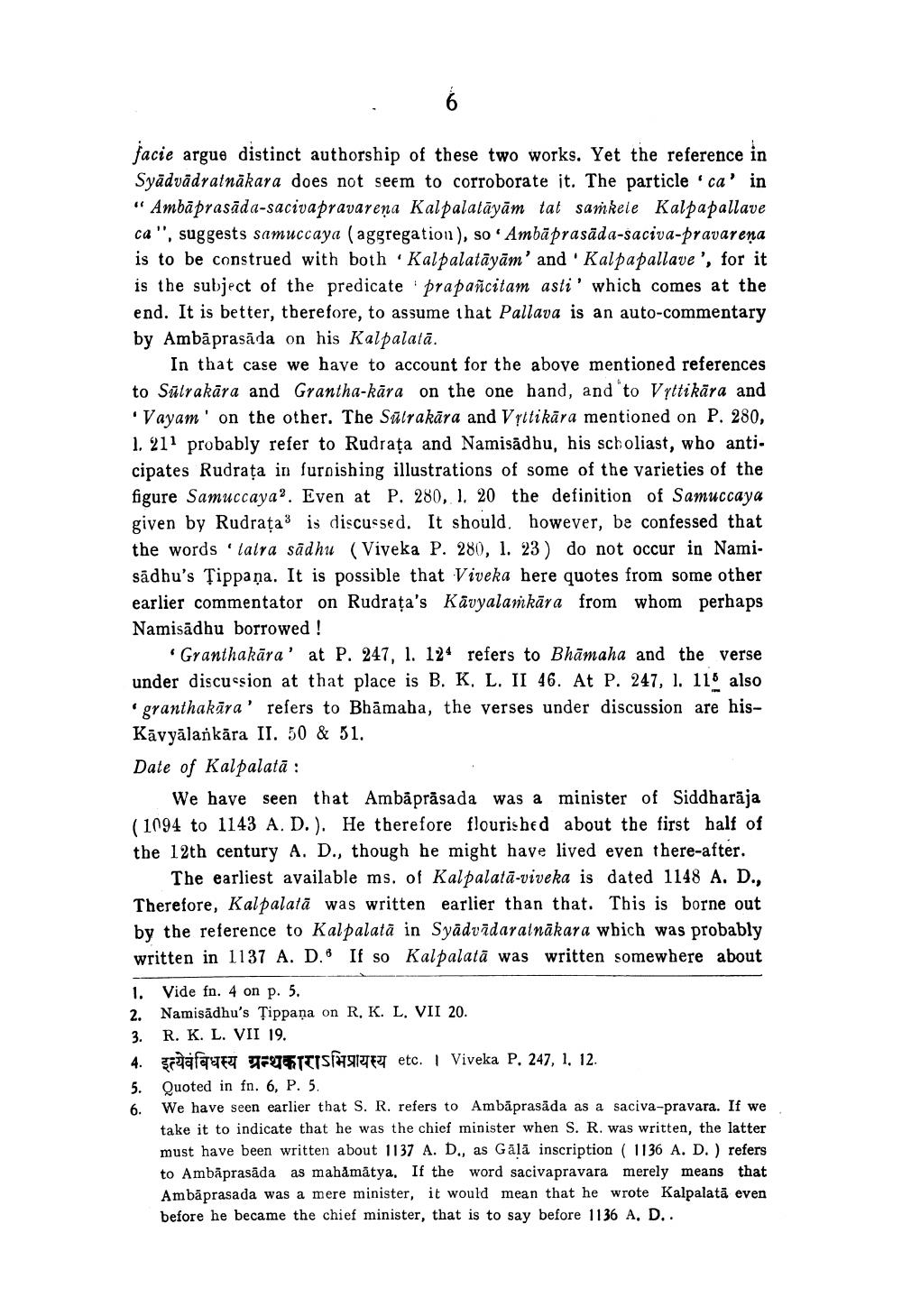________________ facie argue distinct authorship of these two works. Yet the reference in Syadvadratnakara does not seem to corroborate it. The particle ca' in " Ambaprasada-sacivapravarena Kalpalatayam tat samkeie Kalpapallave ca", suggests samuccaya (aggregation), so * Ambaprasada-saciva-pravarena is to be construed with both .Kalpalatayam' and 'Kalpapallave', for it is the subject of the predicate prapancitam asti' which comes at the end. It is better, therefore, to assume that Pallava is an auto-commentary by Ambaprasada on his Kalpalata. In that case we have to account for the above mentioned references to Sulrakara and Grantha-kara on the one hand, and to Vytti kara and Vayam' on the other. The Salrakara and Vyti kara mentioned on P. 280, 1. 211 probably refer to Rudrata and Namisadhu, his scholiast, who anticipates Rudrata in furnishing illustrations of some of the varieties of the figure Samuccaya?. Even at P. 280, I. 20 the definition of Samuccaya given by Rudrata3 is discussed. It should, however, be confessed that the words 'latra sadhu (Viveka P. 280, 1. 23) do not occur in Namisadhu's Tippana. It is possible that Viveka here quotes from some other earlier commentator on Rudrata's Kavyalamkara from whom perhaps Namisadhu borrowed ! Gyanthakara' at P. 247, 1. 124 refers to Bhamaha and the verse under discussion at that place is B. K. L. II 46. At P. 247, 1. 116 also granthakara' refers to Bhamaha, the verses under discussion are hisKavyalankara II. 50 & 51. Date of Kalpalata : We have seen that Ambaprasada was a minister of Siddharaja (1094 to 1143 A. D.). He therefore flourished about the first half of the 12th century A. D., though he might have lived even there-after. The earliest available ms. of Kalpalata-viveka is dated 1148 A. D., Therefore, Kalpalata was written earlier than that. This is borne out by the reference to Kalpalata in Syaduadaratnakara which was probably written in 1137 A. D.8 If so Kalpalata was written somewhere about 1. Vide fn. 4 on p. 5. 2. Namisadhu's Tippana on R. K. L. VII 20. 3. R. K. L. VII 19. 4. gafatet F97ETTIS ET etc. | Viveka P. 247, 1. 12. Quoted in fn. 6, P. 5. We have seen earlier that S. R. refers to Ambaprasada as a saciva-pravara. If we take it to indicate that he was the chief minister when S. R. was written, the latter must have been written about 1137 A. D., as Gala inscription ( 1136 A. D.) refers to Ambaprasada as mahamatya. If the word sacivapravara merely means that Ambaprasada was a mere minister, it would mean that he wrote Kalpalata even before he became the chief minister, that is to say before 1136 A, D..




